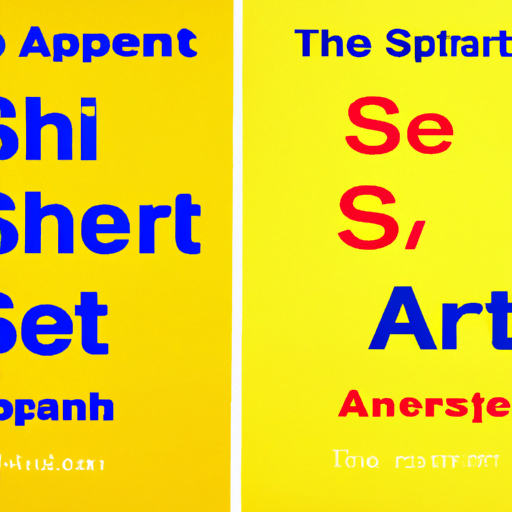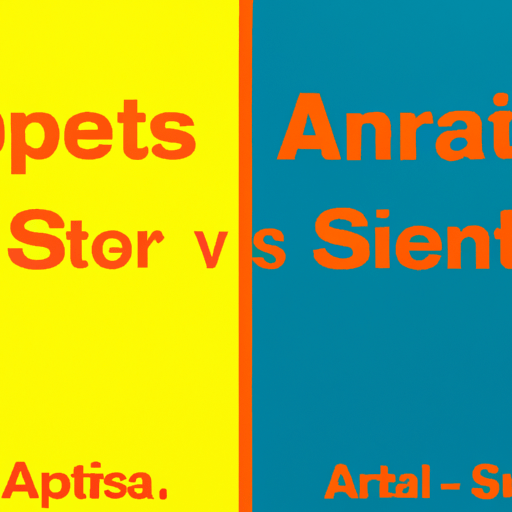
-
Table of Contents
- Serif vs. Sans Serif: Choosing the Right Typeface
- What are Serif and Sans Serif Typefaces?
- The Differences Between Serif and Sans Serif Typefaces
- 1. Legibility and Readability
- 2. Style and Tone
- 3. Cultural and Historical Associations
- When to Use Serif or Sans Serif Typefaces
- Use Serif Typefaces When:
- Use Sans Serif Typefaces When:
- Case Studies and Statistics
- Summary
Serif vs. Sans Serif: Choosing the Right Typeface

When it comes to typography, choosing the right typeface can have a significant impact on the overall look and feel of a design. Two popular categories of typefaces are serif and sans serif. While both have their own unique characteristics, understanding the differences between them and knowing when to use each can greatly enhance the effectiveness of your design. In this article, we will explore the key differences between serif and sans serif typefaces and provide valuable insights to help you make informed decisions.
What are Serif and Sans Serif Typefaces?
Before diving into the differences, let’s first define what serif and sans serif typefaces are.
Serif Typefaces: Serif typefaces are characterized by the small decorative strokes, known as serifs, that extend from the ends of the letterforms. These serifs can be seen as small lines or hooks attached to the main strokes of the letters. Examples of popular serif typefaces include Times New Roman, Georgia, and Baskerville.
Sans Serif Typefaces: On the other hand, sans serif typefaces do not have these decorative strokes. The term “sans” means “without” in French, so sans serif literally translates to “without serifs.” Sans serif typefaces have clean and simple letterforms without any additional embellishments. Some well-known sans serif typefaces include Arial, Helvetica, and Futura.
The Differences Between Serif and Sans Serif Typefaces
Now that we have a basic understanding of serif and sans serif typefaces, let’s explore the key differences between them:
1. Legibility and Readability
One of the primary differences between serif and sans serif typefaces lies in their legibility and readability. Legibility refers to how easily individual characters can be distinguished from one another, while readability refers to how easily blocks of text can be read.
Serif typefaces are often considered more legible in print due to the serifs guiding the eye along the text. The serifs create a horizontal flow that helps the reader’s eyes move smoothly from one letter to the next. This makes serif typefaces a popular choice for long-form content, such as books and newspapers.
On the other hand, sans serif typefaces are generally considered more readable on digital screens. The absence of serifs allows for clearer and sharper letterforms, especially at smaller sizes. Sans serif typefaces are commonly used for websites, mobile apps, and other digital interfaces.
2. Style and Tone
The choice between serif and sans serif typefaces can also convey different styles and tones in a design.
Serif typefaces are often associated with tradition, elegance, and formality. They have a classic and timeless appeal that can add a touch of sophistication to a design. Serif typefaces are commonly used in industries such as law, finance, and academia, where a sense of authority and credibility is important.
On the other hand, sans serif typefaces are often seen as modern, clean, and minimalistic. They have a straightforward and contemporary look that can convey a sense of simplicity and efficiency. Sans serif typefaces are frequently used in industries such as technology, design, and fashion, where a modern and innovative image is desired.
3. Cultural and Historical Associations
Another interesting aspect of serif and sans serif typefaces is their cultural and historical associations.
Serif typefaces have a long history and are often associated with traditional printing and typography. They can evoke a sense of nostalgia and craftsmanship, reminding us of the early days of book printing. Serif typefaces are deeply rooted in the history of typography and can be seen as a tribute to the craftsmanship of the past.
Sans serif typefaces, on the other hand, emerged in the late 18th century as a response to the industrial revolution and the need for more efficient and legible typefaces. They are often associated with modernity, progress, and simplicity. Sans serif typefaces reflect the changing times and the shift towards a more streamlined and functional approach to design.
When to Use Serif or Sans Serif Typefaces
Now that we have explored the differences between serif and sans serif typefaces, let’s discuss when to use each typeface:
Use Serif Typefaces When:
- You are designing for print materials, such as books, magazines, or brochures.
- You want to convey a sense of tradition, elegance, or formality.
- Your target audience is older or more conservative.
Use Sans Serif Typefaces When:
- You are designing for digital screens, such as websites or mobile apps.
- You want to convey a sense of modernity, simplicity, or efficiency.
- Your target audience is younger or more tech-savvy.
It’s important to note that these guidelines are not set in stone, and there can be exceptions depending on the specific design context and goals. Experimentation and testing different typefaces can help you find the perfect fit for your project.
Case Studies and Statistics
Several case studies and statistics support the impact of choosing the right typeface:
A study conducted by the Software Usability Research Laboratory at Wichita State University found that serif typefaces were more effective for reading long passages of text, while sans serif typefaces were more effective for scanning and skimming information.
In another study published in the Journal of Usability Studies, researchers found that participants perceived serif typefaces as more formal and appropriate for serious topics, while sans serif typefaces were seen as more casual and suitable for informal topics.
Furthermore, a case study by the Nielsen Norman Group revealed that using a serif typeface for body text on a website increased reading speed by 7.9% compared to a sans serif typeface.
Summary
Choosing the right typeface is crucial for effective design. Serif and sans serif typefaces have distinct characteristics that can greatly impact the legibility, readability, style, and tone of a design. Serif typefaces are often associated with tradition and elegance, while sans serif typefaces convey a modern and minimalistic look. Understanding the differences between serif and sans serif typefaces and knowing when to use each can help you create designs that effectively communicate your message to your target audience.
Remember to consider the context of your design, the medium you are designing for, and the preferences and expectations of your target audience. By carefully selecting the appropriate typeface, you can enhance the overall visual appeal and effectiveness of your design.
